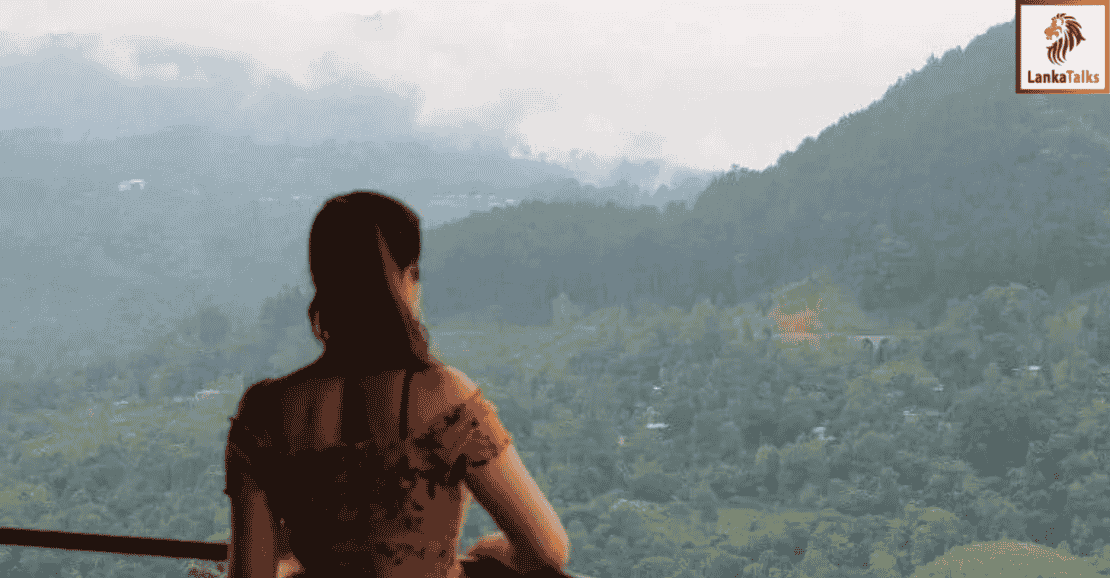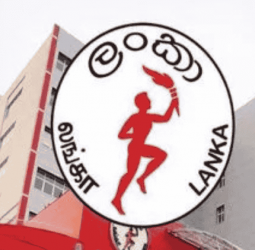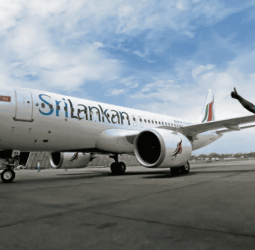The 2026 Budget outlines plans for significant growth in Sri Lanka’s tourism sector, aiming to attract four million visitors and generate $ 8 billion in annual revenue by 2030.
According to the Government, the approach brings together institutional reforms, infrastructure improvements, workforce training, and a coordinated effort to improve the industry’s competitiveness. Stakeholders view the Budget as mainly positive for the industry, while emphasising the need for national promotional roll-out.
Comprehensive strategy
Speaking to The Sunday Morning Business, Deputy Minister of Tourism Prof. Ruwan Ranasinghe noted that the 2026 Budget placed strong emphasis on repositioning Sri Lanka as a competitive global destination. He added that while infrastructure development was central, the Government also recognised the importance of consistent and strategic marketing.
“The President has called for a joint public-private sector initiative to improve promotional efforts, including converting official residences in key locations (e.g. Nuwara Eliya and Anuradhapura) into boutique resorts to attract foreign tourists. Industry leaders have welcomed these moves but have emphasised the need for strong international branding campaigns to sustain year-round tourism,” he added.
The Deputy Minister also noted that several infrastructure and destination-focused proposals were expected to improve tourism revenue significantly.
These include airport upgrades, including Rs. 1 billion allocated for Sigiriya and Trincomalee Airports, the expansion of the Jaffna International Airport, the completion of the Hingurakgoda Airport, and the resumption of the Bandaranaike International Airport’s (BIA) expansion.
The proposals also include destination development, including Rs. 3.5 billion for nature and heritage tourism (e.g. the Hamilton Canal and Negombo Lagoon) and Rs. 2.5 billion for the transformation of the Beira Lake into a vibrant public and tourism space.
“These initiatives will improve accessibility, visitor experience, and regional tourism flows, thereby increasing both domestic and international arrivals and spending,” Prof. Ranasinghe added.
Regarding industry concerns raised in 2025, he noted that concerns in 2025 centred on limited connectivity, underutilised destinations, and inconsistent marketing.
“The 2026 Budget responds with a comprehensive infrastructure strategy, increased funding for destination development, and a call for coordinated promotional efforts. The tourism sector now benefits from clearer policy direction, improved fiscal support, and a more inclusive approach to development.
“Looking ahead, 2026 is poised to be a transformative year for tourism, with the Government targeting 4–5% GDP growth and aiming to expand tourism’s contribution through strategic investments and sectoral reforms.”
Infrastructure development and promotion aligned
Speaking to The Sunday Morning Business, Sri Lanka Tourism Development Authority (SLTDA) Chairman Buddhika Hewawasam highlighted several key measures that would be taken in the immediate future for the industry, especially in light of the Budget proposals.
“Budget 2026 addresses the global branding campaign and the allocation of funds for it, and this is already in our plans. We have obtained initial Cabinet approval to proceed and have made arrangements with the World Bank as well as the Asian Development Bank (ADB) to establish a branding and marketing monitoring unit and a research and brand information syncing facility. The campaign funds are being allocated by the Sri Lanka Tourism Promotion Bureau as well,” he added.
Moreover, Hewawasam explained that airport infrastructure development was essential. Thus, he emphasised that unless facilities such as checking facilities and terminal facilities were expanded, the marketing expenditure would be wasted.
“Hence, we are aligning these two: the marketing campaign is in line with our efforts to expand and penetrate into different and new markets, and also to segment ourselves towards more value-addition and value-driven market systems. We are focused on infrastructure development as well as on expanding tourism,” he noted.
Hewawasam highlighted that the roll-out of the campaign, already scheduled, would take place from the beginning of next year. However, he pointed out that marketing was ineffective if infrastructure development was not properly done, especially in terms of access and aviation hubs.
Conducive for tourism
Speaking to The Sunday Morning Business, University of Colombo (UOC) Professor in Tourism Economics D.A.C. Suranga Silva highlighted that the Budget was very conducive for Sri Lanka’s tourism industry.
Addressing the overall Budget direction, he described it as a positive and uniquely focused one that directly dealt with Sri Lanka’s key macroeconomic challenges.
Overall, the Budget targets a primary surplus of 2.5% of GDP, total Government revenue of 15.4% of GDP, and an overall fiscal deficit of 5.1% of GDP for 2026, while aiming for 4–5% growth. The total estimated tax revenue is Rs. 4,910 billion, which includes revenue from income tax at Rs. 1,210 billion, taxes on goods and services at Rs. 3,056 billion, and taxes on external trade at Rs. 644 billion. The total revenue expectation for 2026 is Rs. 5,300 billion (this includes tax revenue, non-tax revenue, and grants) and is an increase of 4% from 2025.
Prof. Silva noted that these targets were positive, highlighting that the overall budget direction was favourable, reflecting a commitment to macro-level stability, aligning with International Monetary Fund (IMF) conditions, and targeting Government revenue equivalent to 15.9% of GDP, above the 15% requirement, indicating fiscal discipline.
The 2026 Budget projects four million tourist arrivals and foreign exchange earnings of $ 8 billion by 2030.
Turning to the tourism sector, Prof. Silva noted that Budget 2026 employed a multi-dimensional approach to address several key challenges faced by the industry. “We are likely to reach three million tourists by the end of this year, surpassing 2018 figures,” he added.
He explained that Rs. 3.5 billion had been allocated for destination development, including nature and heritage-based attractions such as Haputale, which had now been recognised as a tourism site.
Prof. Silva further noted that connectivity remained one of the biggest challenges in Sri Lanka, both between destinations and in air travel. He added that with tourists having tight schedules and preferring quick or direct transfers, developing domestic airports was a timely decision. He added that upgrading the BIA was essential to handle the expected rise in arrivals, as infrastructure could otherwise become a bottleneck.
Furthermore, he pointed out key areas addressed in the Budget as being very important. These include infrastructure development, inclusive human resource development, connectivity, and marketing. He pointed out that developing human resources was especially essential, with many skilled workers having migrated. In this context, Rs. 500 million has been allocated for vocational training, while Rs. 1.3 billion has been set aside for destination branding.
“Sri Lanka has not invested adequately in branding in recent years. Many still perceive the country as unstable, which shows why sustained promotion is necessary,” he noted.
Prof. Silva also welcomed the emphasis on public-private partnerships, highlighting that tourism could not be effectively managed solely by the public sector, given inefficiencies and innovation-related issues. Public assets should be leveraged by the private sector to ensure competitiveness and value for money.
Addressing tourism challenges
Commenting on potential challenges, he pointed out that despite the increase in tourist arrivals, per capita spending had declined.
“Tourists are spending less because their stays are shorter and there are fewer new experiences. We have to strengthen the linkages with local resources. We must focus not only on increasing arrivals but also on creating experience-driven products that encourage higher spending,” he noted.
Thus, he emphasised the need to develop products to motivate tourists to stay for longer, also noting that many attractions had become repetitive.
“If a tourist visits for the second or third time, they will not be satisfied with the same itinerary, such as Sigiriya and then Kandy. We need to establish a system with collaboration between Government authorities and the private sector to diversify tourism experiences, ensuring inclusive and sustainable products for tourists. Focusing solely on boosting numbers will be insufficient without infrastructure development and experience-based products,” he said.
Prof. Silva also noted that the revenue generated should ensure fair distribution of the tourism economy to communities involved in the industry.
Discussing further challenges, he identified high operational costs and inconsistent pricing as issues that could harm the industry. “We must assess how to reduce certain costs, which is fundamental for new product development and quality products. Some operators charge high prices during peak months to cover losses in off-season periods, which damages long-term competitiveness,” he added.
He also referred to the need for better communication regarding visa fee policies and competitive positioning. He further noted that Sri Lanka could integrate bundled products, in coordination with regional destinations. For instance, the Maldives and Sri Lanka could complement each other, since the latter offers wildlife and cultural diversity that the former lacks.
Speaking further on strategies that may be employed in addition to the country’s beach tourism, he noted that wellness, wedding, food, and spiritual tourism offered strong potential for growth, most of which could be interconnected, as did niche areas such as senior tourism and rural homestay experiences. He added that these segments benefited local communities and reduced revenue leakages.
Addressing broader issues, he highlighted concerns over tourist safety and investor bureaucracy. “Harassment and inefficiency must be addressed if we want to attract both tourists and investors. Approvals take too long and corruption discourages investment,” he said.
Prof. Silva concluded that Sri Lanka must adopt a balanced approach to tourism development. “While expanding tourism, we must recognise the opportunity cost to other sectors like fishing and agriculture. Not every part of the country can or should be developed for tourism,” he noted, stressing that long-term resilience depended on inclusive, sustainable, and well-managed tourism growth.
Meanwhile, speaking to The Sunday Morning Business, Sri Lanka Tourism Alliance (SLTA) Co-Chair Malik J. Fernando noted that Budget 2026 was excellent in terms of getting the foundation of the country and tourism back on track, especially with the improvements to airports and other projects, but noted that promotion still lacked focus.
Fernando welcomed the use of promotional funds, such as for Beira Lake development. With these mostly being funds allocated from the industry, and especially with the industry paying 1% promotional tax, he pointed out that there was no clarity in the Budget regarding national promotion. He pointed out that branding was the industry’s most critical requirement.
Concerns over VAT
Commenting on the Budget proposals, Association of Small and Medium Enterprises in Tourism (ASMET) President Prebudda Jayasinghe highlighted that promotion required more attention.
The main revenue (tax) proposals in the Budget include the reduction of the annual turnover threshold for Value-Added Tax (VAT) and Social Security Contribution Levy (SSCL) from Rs. 60 million to Rs. 36 million, effective from 1 April 2026.
Regarding this, Jayasinghe added that while the VAT threshold had been reduced, it had been done with the same percentage of VAT at 18%. He noted the need for this percentage to be reduced for the tourism sector, adding that it affected many Small and Medium-sized Enterprises (SMEs) in particular as well.
Jayasinghe also welcomed proposed projects and developments for the tourism industry, highlighting how this could contribute to welcoming more tourists in time to come.
“The biggest concerns are regarding the tax threshold and promotion roll-out. The tax ratio for the tourism industry, being a key foreign exchange earning industry, required reduction,” he noted.
Commenting on the reduction of the tax threshold, former President of ASMET Rohan Abeywickrama noted the requests made regarding making the VAT around 5–6% for industries, with no threshold. With the current 18% VAT and threshold reduction, along with the tourism industry being a volume-based industry, he noted that it would be challenging for SMEs.
“There are large businesses that evade taxes through various malpractices. Thus, we request an approach where everyone pays VAT with a reduced percentage,” he said.
He pointed to vehicle import-related concerns faced by the industry, a key infrastructure requirement, as something that also required focus.
Source: The morning
You Must be Registered Or Logged in To Comment Log In?



 Natasha
Natasha




